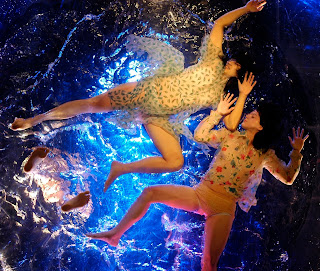Ching Chong Chinaman is a fun play full of laughter and cliffhangers. It follows a Chinese American family that seems normal at first, but then the teenage son, Upton, imports a Chinese man to do his homework so that he can spend all of his time playing computer games. We watch as this stranger forces the family to learn more about themselves as individuals and as a family.
Many creative aspects of the play really stood out to me. The man from China coudn't speak English, but instead of speaking Chinese, he communicated only with body language. He and Upton's sister, Grace, had entire conversations that made me forget that they didn’t speak the same language until Grace said something like, "You still don’t speak English.”
 After the play, I was able to ask the actors some questions about their characters and the rehearsal process. I learned that they only rehearsed for a couple weeks, which surprised me because they all seemed so comfortable with each other. They explained that because of the small number of Asian actors in the theater industry, many of them had previously worked with each other at one time or another. I also asked James Chen, the actor who played the man from China, how it felt to not speak for a big part of the play. He said that it was difficult because he wanted people to realize that he didn't understand his surrounding, not that he actually couldn't speak.
After the play, I was able to ask the actors some questions about their characters and the rehearsal process. I learned that they only rehearsed for a couple weeks, which surprised me because they all seemed so comfortable with each other. They explained that because of the small number of Asian actors in the theater industry, many of them had previously worked with each other at one time or another. I also asked James Chen, the actor who played the man from China, how it felt to not speak for a big part of the play. He said that it was difficult because he wanted people to realize that he didn't understand his surrounding, not that he actually couldn't speak.Ching Chong Chinaman is a lot of fun. The actors all played their roles very well and the chemistry between them was excellent. I definitely recommend this play to teenagers.
TICKETS: Playing thru April 11 • $20 student tickets • West End Theatre, 263 W. 86th Street, 2nd floor










